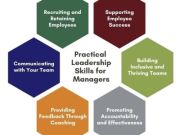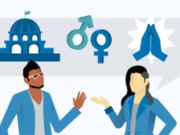DEI Resources
OOLD has identified some resources on fighting racism, inclusive teaching, equity in the workplace, and facilitating conversations that we have found helpful. We invite members of the campus community to add to or critique this list and share what you have been reading, watching and listening to.
- Review UM's Diversity, Equity, and Inclusion plan.
- Review UM's Diversity, Equity, Inclusion, and Justice website for resources and more.
- Our colleagues from Mansfield Library have created a resources against racism page so we have tried not to include anything already listed there. Check it out!
- Inclusive Excellence for Student Success (IESS) is a student-centered office designed to support our diverse community and engage in diversity, equity, inclusion, and anti-racist efforts at UM.
- Visit OOLD's Professional Development Website to find upcoming sessions on Diversity, Equity, and Inclusion topics
Resources to Support Inclusive Teaching
-
DEI Syllabi Statement Suggestions (Word)
Recommended sample statements related to diversity, equity, and inclusion (DEI) that faculty and graduate student instructors could integrate into their course syllabi.
-
Advancing Inclusion and Anti-Racism in the College Classroom: A rubric and resource guide for instructors
This tool aims to support instructors in developing anti-racist approaches to course design and teaching practices. It offers an accessible, and user-friendly entry-point for instructors interested in considering how their instructional choices impact student outcomes. The resource guide provides instructors a range of ideas and options to help instructors through a process of modifying their courses.
-
A Conversation about Race and Racism
Dr. Beverly Daniel Tatum's conversation with President Karla Bird as part of the President's Lecture Series at UM (March 2021).
-
Incorporating Intersectional Pedagogy
from University of Denver's Office of Teaching and Learning
-
Inclusive Teaching Modules
from University of Denver's Office of Teaching and Learning.
-
Inclusive Pedagogy Toolkit
from Georgetown University's Center for New Designs in Learning and Scholarship
-
Inclusive Teaching Guide
from Columbia University Center for Teaching and Learning
-
Stop Talking/Start Talking Handbooks
Stop Talking: Indigenous Ways of Teaching and Learning and Difficult Dialogues in Higher Education and
Start Talking: A Handbook for Engaging Difficult Dialogues in Higher Education, University of Alaska Anchorage.
-
Responding to Difficult Discussions
As well as classroom incivility, from University of Michigan's Center for Research on Teaching and Learning
-
Handbook for Facilitating Difficult Conversations in the Classroom
from CUNY and the Center for Ethnic, Racial and Religious Understanding
-
Syllabi Revision Module to support Equity and Growth
Module to guide faculty in restructuring syllabi in ways that support social belonging, growth mindset, and an equitable learning experience from the Student Experience Project.
-
Reclaiming Native Truth
A project to dispel America's myths and misconceptions in order to achieve greater respect, inclusion and social justice for Native Americans.
-
Peralta Online Equity Rubric
Peralta Community College District's course design instrument
-
Teaching Race: Pedagogy and Practice
from Vanderbilt University's Center for Teaching
-
Facing History and Ourselves
Professional development and educator resources
-
Inclusive Classroom Climate
From Yale's Poorvu Center for Teaching and Learning
-
Strategies to Address Unconscious Bias
from University of California, San Francisco
-
Mentoring and Advising Resources for Racial Injustice
UC Davis graduate studies guide
-
SACNAS Webinars
Society for advancing Chicanos/Hispanics and Native Americans in Science webinars on areas of student success and effective mentoring models.
-
Championing Equitable Instruction and Inclusive Classrooms
Harvard Initiative conference session recordings (October, 2020)
-
Request a student training on DEI
In support of a safe and welcoming campus environment, a number of trainings can be requested from SARC. They are also available to fill class time in the event you need to cancel class.
-
How to Make Your Teaching More Inclusive
Advice Guide from The Chronicle of Higher Education
-
Resilient Pedagogy: Practical Teaching Strategies to Overcome Distance, Disruption, and Distraction
Resilient Pedagogy offers a comprehensive collection on the topics and issues surrounding resilient pedagogy framed in the context of the COVID-19 pandemic and the social justice movements that have swept the globe.
-
Reaching first-generation and underrepresented students through transparent assignment design
This study found that students exposed to the evidence-based instructional practice of transparent assignment performed better on a variety of measures, including academic confidence, sense of
belonging, and mastery of the skills that employers value most when hiring. -
Fertile ground: The movement to build more effective assignments
The design of the papers, projects, presentations, and exams that faculty require of students, once fairly
private work, is increasingly a topic of deliberate, sustained, collaborative effort, as documented by the
National Institute for Learning Outcomes Assessment.
Inclusive STEM Teaching Project
The Inclusive STEM Teaching Project, a NSF Improving Undergraduate STEM Education program, is hosting a six-week Massive Open Online Course (MOOC) from March 6 - April 28, 2023 via edX. By participating in this course, you will learn how to:
- Advance your awareness, self-efficacy, and ability to cultivate inclusive classroom environments;
- Support your development as a reflective, inclusive practitioner;
- Engage in reflection and discussion around topics of equity and inclusion across a variety of institutional contexts;
- Implement inclusive teaching methods in your classes which will remove common barriers and enhance learning in STEM for all students.
Inclusive Workspaces
A guide to assist leaders in supporting and engaging with their staff on matters of race
- from UC Davis Human Resources.
Unconscious Bias: From Awareness to Action
This edX course can help you learn how to recognize unconscious bias and lessen its impact in the workplace. In this course, you will:
- Build awareness to understand what unconscious bias is and why it matters.
- Understand the impact of unconscious bias at work and the impact it has on your decision making.
- Develop skills to help you recognize and take action to manage bias.
- Create a goal-setting plan to work toward becoming an inclusive leader by managing your unconscious bias.
Guide to Organizing Inclusive Scientific Meetings
Scientific meetings can be invigorating, promote the exchange of ideas, foster new collaborations, and provide opportunities to reconnect with existing colleagues. They form an essential part of the connective tissue for the global scientific enterprise. Scientists rely on them to develop networks and knowledge that are necessary to build a career in science. However, not all scientists have positive experiences when they attend scientific meetings. This guide presents some concrete recommendations for how to incorporate inclusion and equity practices into scientific meetings, from the ground up.
DEI Courses from LinkedIn
-

For Managers: Building Inclusive and Thriving Teams
This learning path is provided as part of the Practical Leadership Skills for Managers program. Understand the importance of diversity, inclusion, equity, and belonging in our work places. Learn about unconscious biases and how they impact evaluation, hiring, and more. Learn how to be an ally and interrupt acts of bias.
-

Minimize Bias in Your Recruitment Processes
Remove bias from job descriptions, candidate evaluations, and recruit a diverse group of candidates.
-

Leading Your Org on a Journey of Allyship
Learn how to grow a more inclusive workplace and become an ally in and out of the office. Understand the link between inclusion, equity, and allyship and the importance of allyship as a practice that starts from the top down. The course lists ways allies behave in the workplace, shows you how to identify opportunities to be an ally, explains how allyship can shape your community then walks you through some misconceptions about allyship.
-

Inclusive Mindset for Committed Allies
True allies start with an inclusive mindset based on three basic principles: be brave, be humble, and be dedicated. Understand the diversity and inclusion concepts underlying an inclusive mindset and conduct a self-inventory to identify the motivations driving your allyship actions. Learn how to practice humble allyship that puts marginalized voices first. Continue your journey by dedicating yourself to education and practicing allyship in real-world situations.
-

Be an Inclusive Organization People Won't Leave
While there are numerous external forces that may cause employees to leave a company—opportunities for advancement, more flexible schedules, better pay—you also need to look at the possibility that biased practices in your organization are pushing employees to leave. An approach rooted in diversity, equity, and inclusion (DEI) best practices can help your company get at the business of truly caring for employees, provide an equitable workplace for all, and retain your valuable workforce. Think more systematically about why people quit, not just any organization, but your organization specifically.
-

Bystander Training: From Bystander to Upstander
By going from bystander to upstander—someone who holds their coworkers accountable for bad behavior—you can turn a toxic workplace into a supportive environment where employees are able to do their best work. Learn how to build an upstander culture, hold employees and peers to professional conduct, and develop the skills you need to speak up when fellow employees are being bullied or harassed.
-

Becoming a Male Ally at Work
As a male ally, you can help boost diversity by chipping away at the systems that perpetuate everyday unconscious bias. This course shares simple actions you can take right away to further gender equality in your workplace. Get tips for amplifying women's voices at work, including how to use your power to pass the mic to those whose voices often go unheard. Learn how to challenge the common leadership-likability double bind that women face as they rise through the ranks. Plus, learn how to sponsor women at work, shoulder your share of emotional labor, and more.
-

Confronting Bias: Thriving Across our Differences
Find greater meaning, well-being, and productivity by learning how to interact with others across differences. Discover how to create inclusive environments where everyone can thrive. Learn the impact of our cultural lens on our daily relations and how to counter bias in our words and actions.
-

Unconscious Bias
We're all biased. Our experiences shape who we are, and our race, ethnicity, gender, height, weight, sexual orientation, place of birth, and other factors impact the lens with which we view the world. Recognize and acknowledge your own biases so that you can identify them when making decisions, and prevent yourself from making choices based on a biased viewpoint. Learn strategies for overcoming personal and organizational bias.
-

Dealing with Microaggression as an Employee
Learn how to identify and address every day, subtle, intentional and unintentional actions or behaviors that perpetuate bias toward marginalized groups in the workplace. Get actionable steps to create safe spaces in the workplace and effectively address behaviors directly with the offender or through a third party.
-

Supporting Allyship and Anti-Racism at Work
While racism and discrimination are systemic problems that persist, each of us can play a role in helping to eliminate them in our professional environments. This course teaches you the three primary ways racism shows up in the workplace and provides practical strategies that employees at all levels can apply to build a better culture that supports historically underrepresented groups.
-

How to Speak up Against Racism at Work
Regardless of role or level, employees often want to speak up against offensive/racist comments or questionable practices, but they don't know how to do it. This course shares specific techniques and practices that anyone can use to address these uncomfortable situations with clarity, focus, and impact.
-

Discussing Racism with Dr. Christina Greer
Dr. Christina Greer, renowned author, educator, and expert on American history, Black ethnics, and public policy, provides an engaging course intended to show that conversations about race and racism can be healthy, productive, and impactful. Delve into important topics such as the reasons people may be uncomfortable talking about racism, best practices for speakers and listeners, the real-life impacts of racism, and how conversations can lead to action.
-

Difficult Conversations: talking about Race at Work
This course highlights the barriers that make talking about race so challenging. Learn a framework that allows you to acknowledge and validate emotions, use curiosity to open up dialogue, and work with others to determine what you're trying to solve.
-

Recruiting Diverse Talent as a Hiring Manager
This course is a guide that can help you develop a diversity hiring strategy, increase your candidate pool, and remove bias from your screening and interview process. Plan for a bias-free recruitment process, create more diverse recruiting teams for more diverse hiring, and adopt best practices when it comes to candidate screening, interviews, and evaluations. Plus, learn how to make your efforts authentic by understanding the motivational triggers and factors that candidates consider when weighing new roles and opportunities.
-

Uncovering unconscious bias in Recruiting and Interviewing
Despite our best efforts, bias is a contributing factor in our decision-making. Unconscious bias is even more precarious, as we are often unaware that it's a factor in our decisions. This course defines a number of unconscious biases, as well as how the biases can impact your decision-making and how you can combat them when recruiting and hiring qualified candidates.
-

Diversity Recruiting
Speaking frankly about age discrimination, gender bias, and hiring disparities can take many talent acquisition professionals out of their comfort zone. This course explains how to confidently approach the topic of bias and successfully address it when recruiting. It outlines the most common mistakes that recruiters make as well as ways to assess your current recruiting strategy to achieve success.
-

Diversity, Inclusion, and Belonging
Diversity is having a culture that values uniqueness: people of different backgrounds, cultures, genders, and races. Inclusion means inviting diverse groups to take part in company life. It's belonging that makes each individual feel accepted for who they are. How to drive the conversation on DIBs, hire and retain diverse talent, listen to employees, and integrate DIBs into your employee life cycle.
-

Strategies for Fostering Inclusive Language at Work
This course explores how inclusive language can create a better workplace culture and proves that even the slightest language adjustments can make a big difference. Review concepts around linguistics and how language works, then review common phrases and words that can often have a hidden meaning. Learn actionable ways to make your language more inclusive.
-

Cultivating Cultural Competence and Inclusion
Learn why cultural competence is key to the success of any diversity-related initiative, as well as how to assess and grow your own cultural competence. Scenarios and techniques that can help you grasp how your worldview impacts your behavior, as well as how to more effectively engage and adapt across cultural differences.
-

Communicating about Culturally Sensitive Issues
Discussions about cultural differences can be uncomfortable. They take courage. This course helps you understand that everyone has a unique lens based on their experiences, and that understanding and appreciating that difference is the first step in being able to discuss sensitive topics. Learn a number of techniques to help you navigate these difficult conversations.
-

Skills for Inclusive Conversations
Developing the skills to conduct meaningful conversations on potentially polarizing topics such as race, religion, and gender is critical. Learn a multistep process for building the skills necessary to engage in inclusive conversations. Find out how to conduct an exploratory self-assessment to better understand yourself and your team, learn tactics to go from polarization to common ground, and discover practical techniques for discussing difficult topics.
-

How to be more Inclusive
Creating an inclusive workplace, where every employee feels welcomed, valued, respected, and heard, requires both structural change to your company processes and active allyship in your day-to-day interactions. This course explores common biases in the workplace and tangible ways to shut them down. It discusses key topics like identity, microaggressions, hiring practices, allyship, and inclusion best-practices.
-

Leading Inclusive Teams
In this course, learn how to create a shared understanding of why inclusion is important for your team, as well as revamp your own leadership and communication practices to ensure that your diverse team continues to thrive. Create an environment that makes everyone feel comfortable bringing their true self to the office—without ever feeling like an outsider. Learn how to model open communication, discover implicit associations, delegate work equitably, and more.
-

Inclusive Leadership
This course reveals the benefits of inclusive leadership, including the positive impacts it can have on employee engagement, innovation, and creativity. It outlines a best practice framework for developing inclusive leaders in an organization, and shares tips for avoiding common leadership pitfalls. Learn practical strategies you can use to cultivate a more inclusive workforce.
-

Managing a Diverse Team
Team leaders should aim to create an inclusive culture that celebrates differences and fosters the best performance from every team member. Prepare yourself to lead by identifying cornerstones of diversity and reviewing diversity and inclusion terminology. Strategies for observing and coaching your team to cultivate behaviors that build trust and strengthen relationships.
-

Diversity and Inclusion in Marketing: Inclusive Language for Marketers
Words matter. For as much as words can make a positive impact with an audience, they can also divide and alienate us. Now more than ever, it’s critical for marketers to intentionally use inclusive language. This course outlines the basics of inclusive language and provides a framework to evaluate your marketing assets, such as checking for stereotypes and gender-inclusive language.


